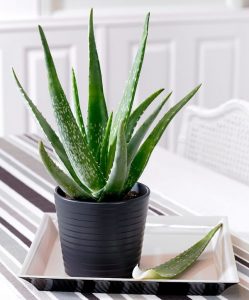Air pollution is a mix of particles and gases that can
reach harmful concentrations both outside and indoor. It’s effect can range
from higher disease risks to rising temperatures. Smoke, soot, mould, pollen,
methane and carbon-di-oxide are just few examples of common pollutants. One of
the simplest ways to reduce the effects of pollution is to increase flora.
Today we will discuss how to keep good quality air inside our homes/offices.
Reasons for
keeping plants in home:
1)
Reduces carbon-di-oxide levels.
2)
Provides more oxygen for home.
3)
Reduces levels of some pollutants, such as
benzene and nitrogen-di-oxide. Purifies the air in your house and office by
absorbing carbon monoxide, formaldehyde and xylene. It can even filter tiny
fecal matter particles out of the air.
4)
Increase humidity. This is good during the
winter months when the air in the home is very dry or in summer when there is
excessive use of AC’s.
5)
Reduces airborne dust levels. This is like
another house filter.
Some indoor plants
are:
1)
Snake plant/mother in law’s tongue
2)
Aloe vera – It is an air pollutant filter,
especially for those toxins emitted by cleaning products. The healing
properties found in it’s gel help to heal cuts and burns.
3)
Spider plant
4)
Bamboo palm – acts as a natural humidifier.
5)
English Ivy – has amazing air filtering
abilities that are extremely beneficial for those with asthma/breathing
problems and allrgies.
6)
Peace lily – is one of the few flowering indoor
plants.
7)
Chinese evergreen
Each plant has its own varying degree of purification
properties and assists in creating healthier space in its own unique way.
Utilising a combination of different indoor plants and grouping your plants
together has been proven to provide best result, both in terms of visual appeal
and plant success.
Tips for taking
care of Indoor plants:
1)
Make sure the plant pot has drainage holes in
the bottom of the pot.
2)
Place your plant near a light source, whether
it’s natural or artificial. Take it out once in ten to fifteen days so that it
gets natural light but make sure it is in a cool place. Strong sunlight after
having been indoors will make the plant wilt or droop.
3)
Keep the potting soil moist.
a) When the tips of leaves turn brown or the
underside looks yellow, it means the plant has been over watered. Don’t water
it for a couple of days and once the soil is dry, water lightly.
b) If
the leaf tips turn yellow and then brown, it means the plant is dying for lack
of water. Water it more often.
4)
If your plants suffer from fungus, the cause is
too much humidity. Move the plant into sunlight.
5)
Clean the dust off the leaves frequently. Can
use damp cloth.
6)
Once a month give your plants a feed of a liquid
compound fertlizer that is made up of phosphates, nitrogen and potash. Nitrgen
keeps the leaves healthy, phosphates strengthen roots and potash is good for
flowers. You get the compound in any reputed nursery.
On an average, indoor house plants last 2-5 years. After
that, plants donot develop well and its’ best to invest in another plant.
Happy Living








I am going adapt these taking care points in which I am lacking. Radha
ReplyDelete